ANSWERING THE CALL

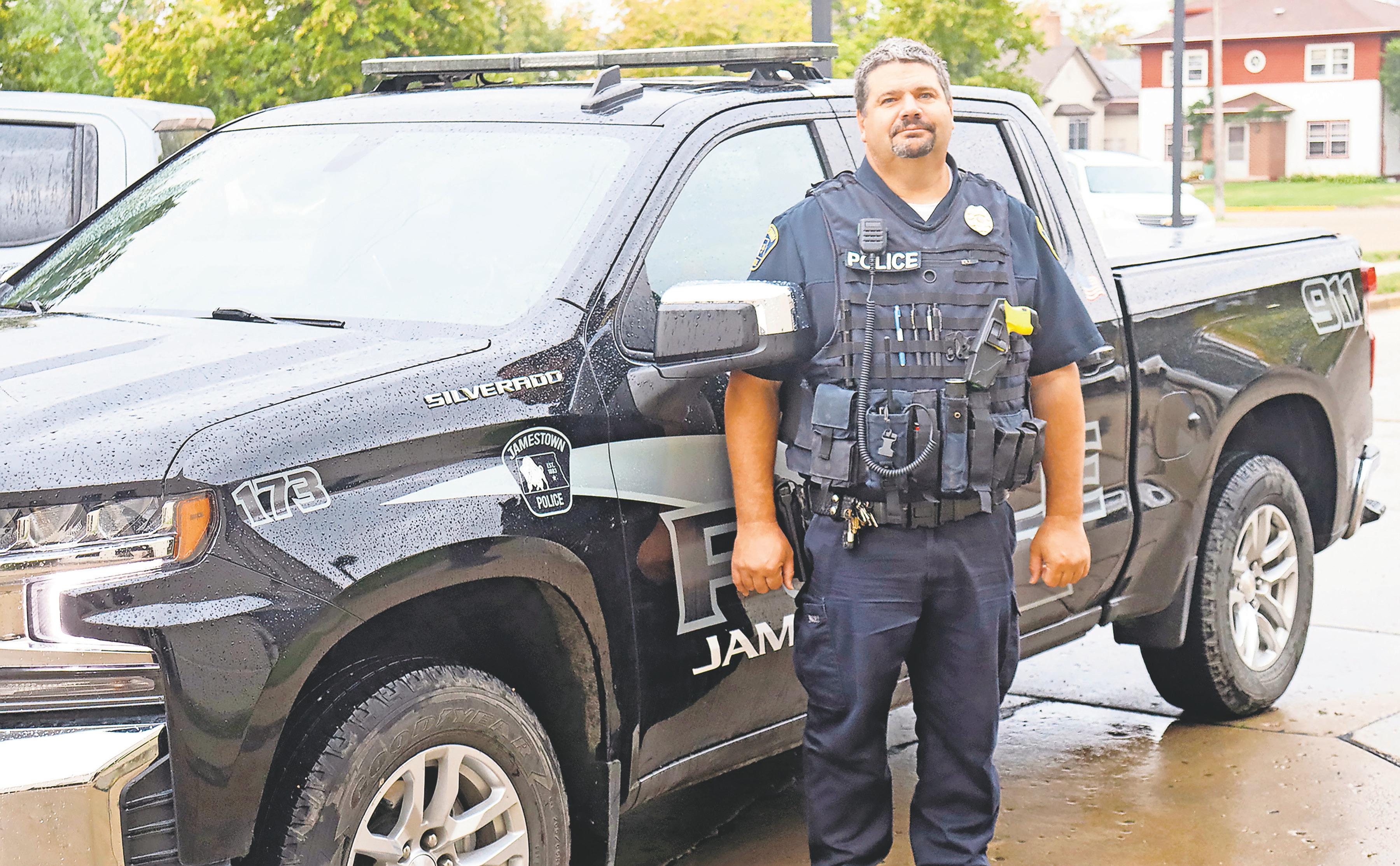



By Masaki Ova
Jamestown Sun
The
JAMESTOWN — For John Rose, working as a chief of police in Rugby, North Dakota, was going to be his last job in law enforcement, but when he moved to Jamestown he read a story about a shortage of police officers and reached out to the Jamestown Police Department.
“I just basically volunteered myself and said, ‘Hey, I’m here, you are short, I’m still licensed, I’m old but I can still kind of function out there if you just need somebody out there to help out,’” he said.
Rose and his youngest son moved to Jamestown earlier this year so he could be closer to his oldest son, who had moved here earlier. He said he has known Scott Edinger, Jamestown chief of police, for around seven to eight years through the Chiefs of Police Association of North Dakota.
He currently works as a part-time police officer for the Jamestown Police Department and also as a brewer for Drift Prairie Brewing Co.
He said working for the Jamestown Police Department made sense financially for him and it also allows him to work on the streets without dealing with the stress that comes from the administration side.
“It has filled a little bit of the old void of being out on the street when it’s kind of fun,” he said. “I enjoy it. It’s rewarding.”
Currently, Rose does security at Jamestown Municipal Court and patrols on the streets.
“There are always holes that I can go out on the street and get that interaction (with other people),” he said.
Rose brings more than 25 years of experience to the Jamestown Police Department

and has worked in patrol, investigations and administration.
“I’ve shown over the years that I can make good decisions,” he said. “If younger officers have questions, (I’m) just another older, experienced officer from a little different era of law enforcement.”
Rose, who is from Fergus Falls, Minnesota, decided to get into law enforcement when he was in his mid to late 20s. Before law enforcement, he said he wasn’t career focused. He spoke to an adviser at Fergus Falls Community College, who was also a police officer in Fergus Falls, about getting into law enforcement. He eventually completed a two-year degree and got licensed to work in law enforcement.
Rose began his career in law enforcement in 1997 working in North Dakota as a police officer
in Napoleon before working for the Devils Lake Police Department from 1996 to about 2006. He was the chief of police in Cando before he took the same position in 2011 in Rugby.
He said he wanted to get away from the administrative side of law enforcement. He said it was difficult to get his department fully staffed and he was working all the time.
“Law enforcement administration is a different monster and you can get burnt out very easily especially when you are going through different officers,” he said.
In Jamestown, Rose said law enforcement officers deal with the same things as smaller communities but it’s more frequent here because there are more people. In a smaller community like Rugby, it can be a little more challenging because services to help individuals are about an hour away.
It has filled a little bit of the old void of being out on the street when it’s kind of fun. I enjoy it. It’s rewarding.
~JOHN ROSE
“So you didn’t have good mental health services, stuff like that,” he said. “Whereas here, some of that makes some of those calls a lot easier because the services are available and there are more people doing it here. In Rugby, some of that stuff I had to do by myself.”
Rose said the most rewarding part of being in law enforcement is just being thanked. He said it’s rewarding when someone gets out of jail and thanks him for being arrested because that interaction may have led to the individual making changes to his or her life.
He said right now it’s challenging to find people to work in law enforcement. He said there is a shortage of qualified people and they don’t want to do that type of service.
“I have no clue why that is,” he said.
mova@jamestownsun.com | (701) 952-8454



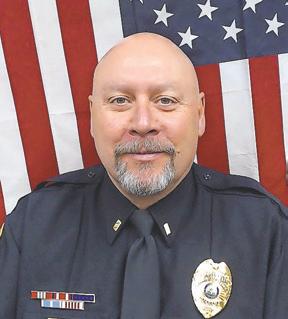


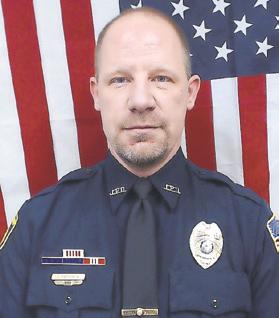


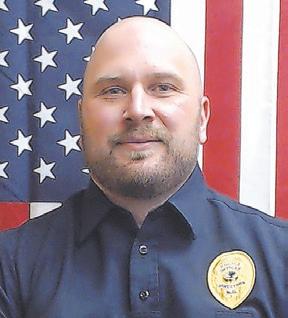
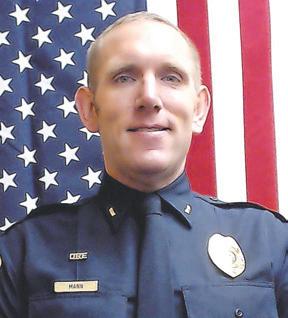
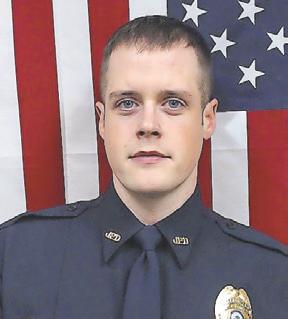


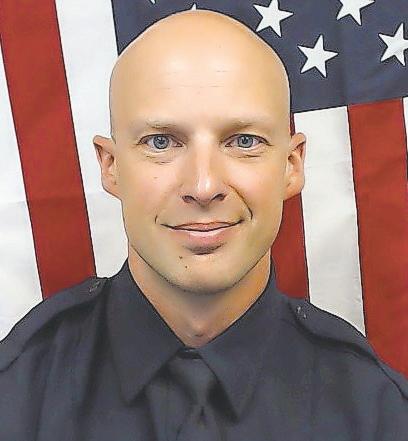

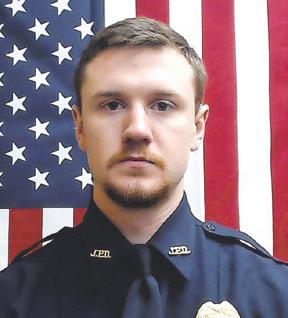





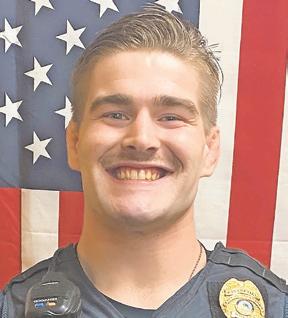

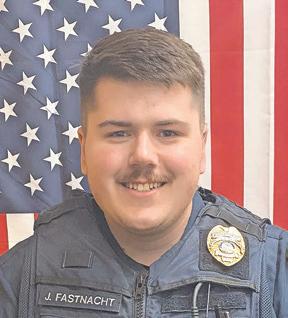
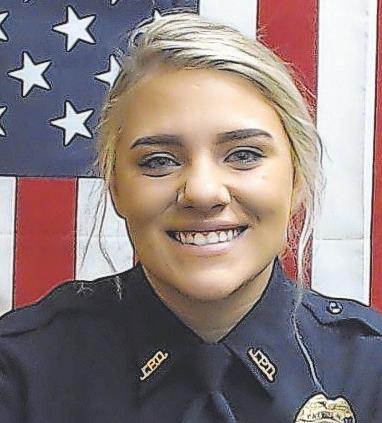
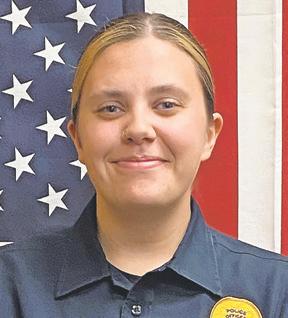







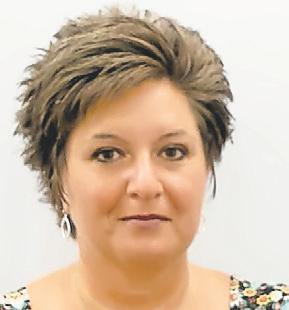
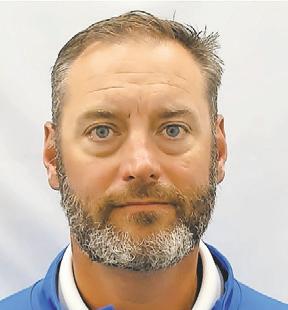
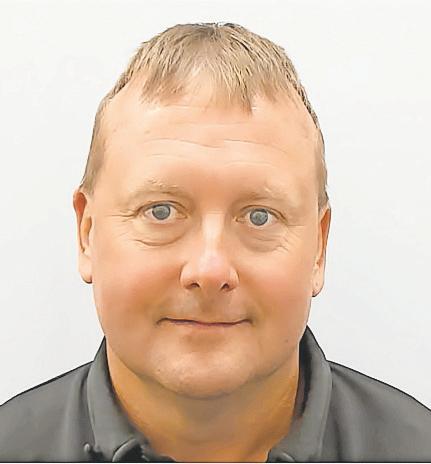
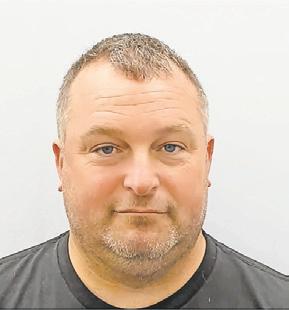

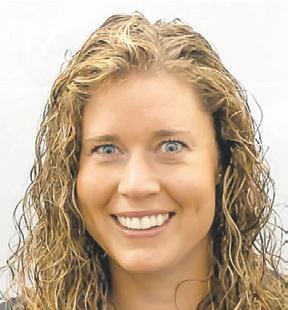

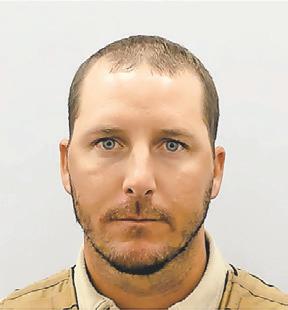

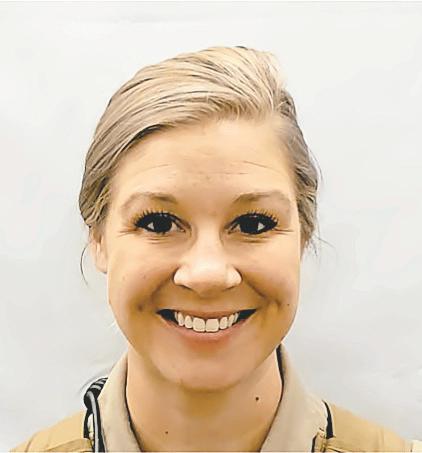











































































By Masaki Ova The Jamestown Sun
JAMESTOWN — For Maj. Damian Hoyt with the Stutsman County Sheriff’s Office, it’s a good feeling when he helps others and makes their day better.
“You know that you made somebody’s day better by just being there,” Hoyt said. “They always feel better if someone is there with them that they can trust.”
He said the Sheriff’s Office helps people who are having vehicle problems on the highways.
“We’ve changed a lot of tires and fixed a lot of cars where we might slap a belt back on that fell off,” he said. “If it’s something simple, rather than letting them sit out there and be cold or whatever, if it’s something we can take care of, we do.”
Hoyt grew up in Kensal and graduated from Jamestown High School in 1994. He attended Northwest Technical College in Wadena, Minnesota, where he got his telephone service credentials.
He didn’t like what he was doing and eventually was hired in 2001 as deputy for the Wells County Sheriff’s Office. He was then sent to the Law Enforcement Training Academy in Bismarck.
Hoyt said the late Jack Miller, who was a chief deputy for the Stutsman County Sheriff’s Office, had visited Kensal Public School while he was an elementary student.
“I just thought it was pretty cool after that,” he said, referring to law enforcement. “He came in with someone else wearing the uniform and talked about things and it kind of stuck in my brain.”
Hoyt started working for the Stutsman County Sheriff’s Office in May 2003 where he has been a patrol deputy. He was promoted to major
in early 2022 and now oversees warrants and transports while still doing patrol and civil process.
“That’s the nice thing here; everybody does everything,” he said. “Nobody is better than anyone else.”
His duties now include entering warrants into a statewide and nationwide database so other law enforcement agencies know if an individual has a warrant when making a stop. If a law enforcement agency apprehends an individual with a warrant, the Stutsman County Sheriff’s Office will get notified to pick the person up.
“So I line up transportation for the guy to get back here so they can see the judge,” he said.
Stutsman County Sheriff Chad Kaiser said Hoyt has a lot of knowledge in law enforcement. He said he knows the county and the people and is “very valuable” to the Sheriff’s Office.
“He is definitely a good guy,” he said. “He’s compassionate about what he does and is wanting to make the right decisions and do the right things for the people.”
Hoyt said law enforcement show respect to individuals who are often in trouble and that can potentially help them change in a more positive direction.
“That’s what everybody wants is to be respected,” he said. “Whether they will change or not, they will always remember it. Nobody wants to be felt sorry for. … Ultimately only those people can change themselves but if you can give them a little guidance to steer them in the right way, any little bit helps. It does happen more than you think.”
He said the Sheriff’s Office relies on those individuals who have gotten into trouble to help them with something in the future.

“It’s happened where we run into trouble and one of those guys will be ‘Hey you treated us with respect, so I’m here to help you out if you need it,’” Hoyt said. “We generally don’t have a lot of people that flat out don’t like us.”
Hoyt said he recently ran into a young individual who was getting into trouble. He said the individual is now straightened out, has a job and is talking about retirement plans.
“It’s fun when that happens,” he said.
He said one of the most rewarding parts about his job is knowing everybody in the communities they visit.
“You go to the small towns, you go to a basketball game, sporting event,
John M.
you get to know people,” he said. “You can stop and visit with anybody at any time.”
Hoyt said the most challenging part of being in law enforcement compared to the past is the younger generation not showing as much respect as they did 20 years ago.
“They see this all happening on TV and they think that is the way it should be,” he said. “That’s kind of the thing is that there is a little bit more of a lack of respect. Overall, we don’t see a lot of it here, which is good.”
He said the Sheriff’s Office is fortunate that the community stands behind the Sheriff’s Office and will help the agency if needed.
mova@jamestownsun.com | (701) 952-8454
Kim Schrenk, Jack Meikle have seen many changes over their years of service
... it’s the people who make the department. All the machinery in the world won’t put it out if you don’t have those people.
~JACK MEIKLE
By Kathy Steiner
The Jamestown Sun
JAMESTOWN — Kim Schrenk and Jack Meikle are the longest-active serving members on the Jamestown Rural Fire Department. Schrenk has 39 years of service, and Meikle has 25.
“Anytime you’re lucky enough, you have members of any organization that have been there as long as Jack and Kim,” said Brian Paulson, JRFD fire chief. The two have knowledge of the department’s history and bring “a kind of tempered experience” with that knowledge, he said.
Paulson noted that roles change over time and although the two men are not on the front lines these days, they still have key roles in the department’s firefighting duties.
“These days I more or less (am) on the outside helping pull hose and haul water and stuff like that,” Schrenk said. “I’m just not as nimble as I used to be. Getting into those houses, you got to be pretty nimble, you never know what you’re going to run into there.”
Meikle will bring a tanker to the scene of a call, among his duties.
“I don’t fight fires, so to speak, anymore,” he said. “I got to leave that up to the young guys and the
younger firefighters because I just, if I try and go into a burning building, they’re going to end up taking their time with me, dragging me out rather than working on the fire. So I’m smart enough to stay out of those situations.”
Camaraderie, changes
The two men said they like camaraderie and that was among the reasons they joined and have stayed for so many years.
“My father-in-law was on the department and he’s the one that talked me into joining,” Schrenk said. “I don’t mind fighting fires, I learned a lot and (am) still learning.”
He said he likes helping the newer firefighters as well.
Meikle was recruited by a friend to serve.
“I went down there and when I joined the force, it was pretty easy to join,” Meikle said. “It was all rural volunteers and we pretty much … just put out grass fires.”
He said he saw few structure fires in his early years of service and said he’s continued serving in part due to the adrenaline when the pager goes off as well as helping others.





“I guess it’s exciting,” Meikle said. “I liked the idea of the accomplishments if we save things. A lot of time it depends on the time we get called whether we can save anything, but we really took pride, I think most of the people, they take pride in trying to save as much as we can.”
Among the changes Schrenk has seen in his 39 years is serving under every JRFD fire chief. The two said a major change was the move from JRFD’s building located west of the Jamestown Fire Department to its current facility in southeast Jamestown.
“When I started and for the first 20 years of the department, we were in a, it was a facility that was OK,” Meikle said. “It served us well but we were pretty cramped in there, a sardine can, for all the equipment we had. But then the equipment started getting bigger and bigger and we were having a pretty hard time so a bunch of the guys got together and started looking for a new place. And we ended up purchasing a new place and adding to it. And we have a fantastic facility now.”
The new facility gives JRFD room to grow and train inside if necessary, Meikle said. He said the department has “some of the smartest people in the world on our force and they’ve gotten us equipment that we need.”
“But it’s the people who make the department,” Meikle added. “All the machinery in the world won’t put it out if you don’t have those people.”
Schrenk said in earlier years, they were adapting lighter-duty trucks where possible to haul the equipment they were carrying. An old milk truck, for example, was purchased and converted to use for hauling water, he said.
“They had to do with what they could afford at the time,” he said.
The new equipment is more firefighter friendly, Schrenk said. All have pumps on them to fight fires. Before, a tanker initially could only be used to haul water because the larger trucks would have a tendency to get stuck when taken off an established trail, he said.
“The old ones — a tanker was a tanker and that’s all it did,” he said. “If you basically hauled water, you’d have one person running to the hydrant or whatever. We’d pump out of the river or wherever we could get water close to keep it going.”
Changes in fighting fires, training
Schrenk and Meikle say fighting grass fires has basically stayed the same through the years but materials in cars and products in homes have
become more toxic and potentially dangerous.
With car fires, “you used to be able to just knock it down with some water and be able to walk up to it and not have to worry about the different materials inside your vehicle that are toxic,” Schrenk said.
He said in older vehicles, there were springs and mechanical mechanisms under the hood but now there is equipment with the potential to hurt or kill someone.
Meikle agreed.
“What’s (also) changed in the past 25 years is our structure fires. … nowadays, there’s so much training because of the hazards of house fires, of structure fires,” he said. “The materials in them burn so fast now. The caustic chemicals that come off of all this furniture.”
Meikle said firefighters rarely used self-contained breathing apparatus when he started but now they’re used almost on a daily basis when they’re out on calls.
Training is also another aspect that has increased through the years, the men said. Meikle said today’s firefighters have a large amount of training to do in order to respond to calls. While he thinks the amount of training may deter some from joining, he noted it’s important and necessary to keep people safe.
Along with monthly training, firefighters have other training opportunities throughout the year, Paulson said. There are currently two training officers in JRFD, and firefighters train in certain areas that they previously didn’t.
“When I first started, grain bin training like they do now, that was not even a thought,” Schrenk said. “If there was somebody in the grain bin, basically we just cut a hole in the side and tried to find them.”
Meikle also said the Jamestown Rural Fire District is also one of the most important aspects of JRFD. The district is the governing body of the fire department, Paulson said, and is made up of representatives of the townships in the district. They are not JRFD firefighters.
Meikle retired in 2000 from assembly work at Haybuster Manufacturing, now known as DuraTech Industries. He and his wife, Gloria, have a daughter, Kristi (Josh) Eberhardt, and two grandchildren.
Schrenk currently works for the Stutsman County Road Department. He and his wife, Carolyn, have two sons, Tyler, who lives in Ypsilanti, and Jonathan, who lives in Jamestown, and two grandchildren.
“We’re just lucky to have those guys on,” Paulson said. “... It’s nice to have them there to bounce things off of and give you advice. Been through enough and seen enough situations. They tend to have pretty tempered even-keel advice to give.”
ksteiner@jamestownsun.com | (701) 952-8449


Anytime you’re lucky enough, you have members of any organization that have been there as long as Jack and Kim. The two have knowledge of the department’s history and bring “a kind of tempered experience” with that knowledge
~BRIAN PAULSON, JRFD FIRE CHIEF





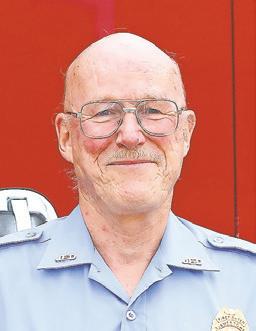

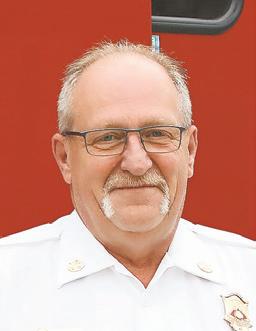
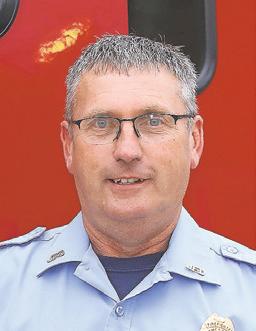
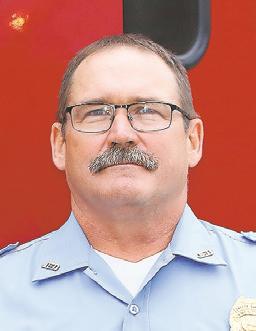


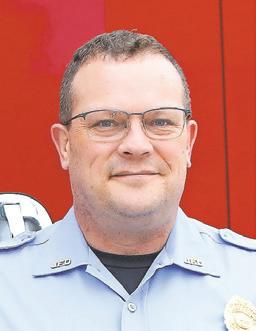




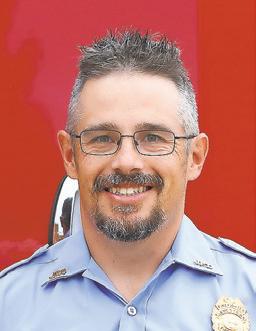



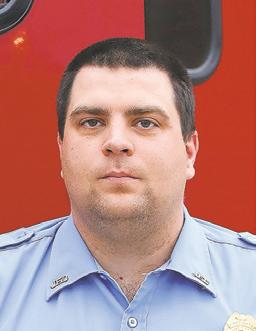





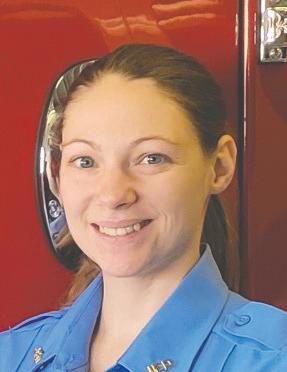





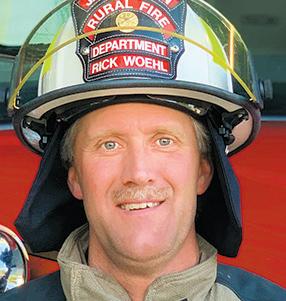

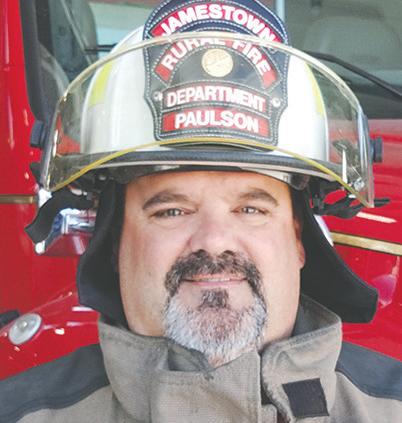

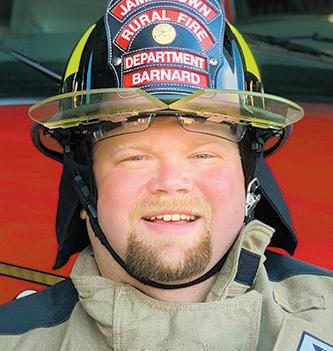
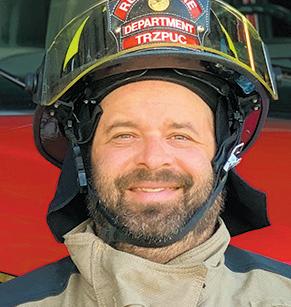
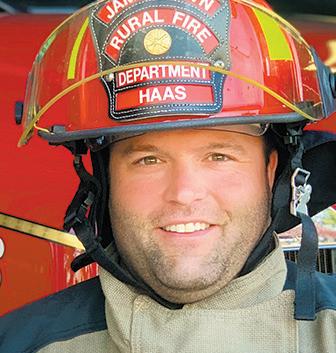


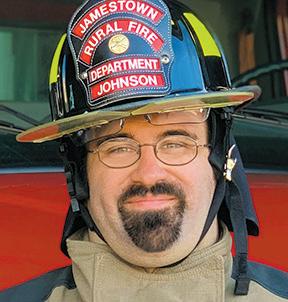



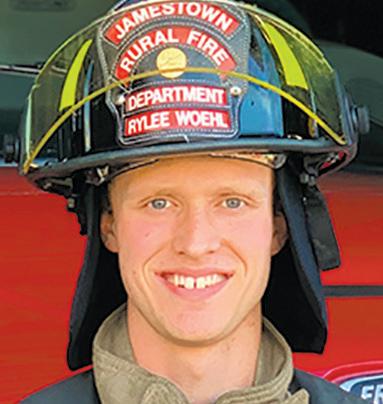
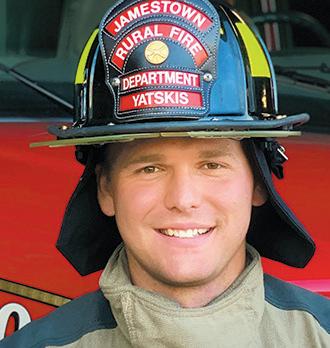

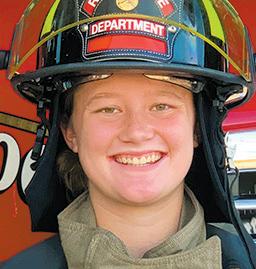

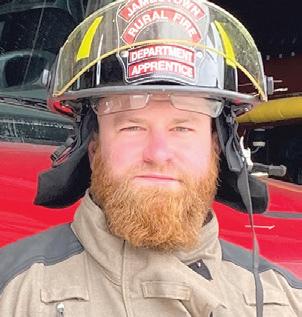
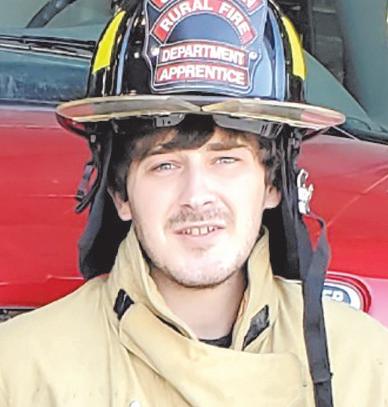


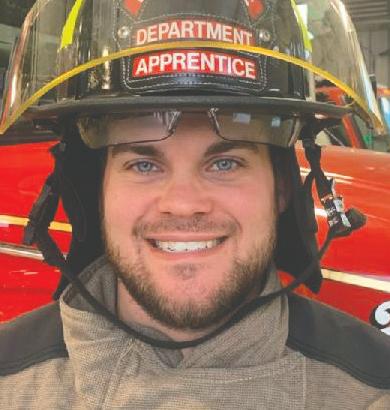

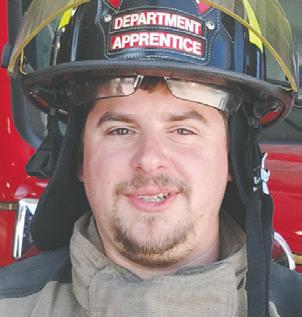
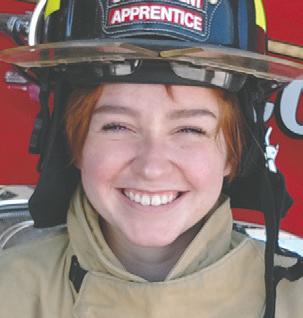














By Kathy Steiner
The Jamestown Sun
JAMESTOWN — Amanda Hecker
didn’t waste any time when she became a volunteer firefighter for the Jamestown Fire Department on Oct. 27, 2022. In less than a year, she’s already completed the required Firefighter I class and is near her Firefighter II certification as well.
“I test out on that the first week of October,” she said.
Hecker is a native of the KenmareBowbells area in North Dakota. She is employed by Jamestown Area Ambulance, where she’s worked for four years as a paramedic. It was through her employer that she had an opportunity to attend fire school.
“... so I went down to Arizona and did some wildland fire training, and then I was deployed to New Mexico for a wildland fire,” Hecker said. “I worked on a three-man team there and one of my partners was a female firefighter out of Colorado. And she just really was talking to me about how cool structure fire (fighting) is and how much she enjoyed it. And I thought, maybe I could give structure fire a try because I enjoyed the wildland fire.”
After her return, she connected with Lt. Sheldon Mohr of the Jamestown Fire Department about becoming a firefighter and applied at JFD.
A full-time paramedic position might seem to be enough work for one person rather than adding firefighting into the mix. But not for Hecker.
“I really enjoy paramedicine,” Hecker said. “Firefighting wasn’t anything that I ever considered. I’m a very small female and when you think of a firefighter, you typically think of these big strong men that come in and save the day. But through going on deployments and meeting other women that were firefighters and other women that had smaller statures like myself, I realized that it might actually be something that
I was able to do … I don’t feel like I’m involved in the community of Jamestown so much so that was kind of another way to help outside of the ambulance as well.”
Hecker says she got the nickname “Mighty Mouse” from a fellow paramedic when she started her career due to her size.
“He was just impressed with the amount of weight I was able to lift into the ambulance,” she said.
She describes herself as “5-foot nothing, 120 pounds on a heavy day and with EMS there’s a lot of lifting, you know, lifting patients into the ambulances, lifting them out of their homes, extricating when they’re unable to do so themselves,” she said.
She noted when firefighting, she is carrying a 45-pound air pack along with other equipment.
JFD Chief Jim Reuther says Hecker is the smallest firefighter in size to pass the required agility test to join. He said the test is not strenuous but noted some strength is required.
“I always say, ‘How bad do you want to be here?’ And that’s how hard they work,” Reuther said of new applicants. “It doesn’t matter the size (of the firefighter) over the years I’ve been here. … I think it’s more determination and yes, some strength.”
These days, Hecker says she’s on call “24/7” between her ambulance and firefighter work.
“So while I’m scheduled on duty at the ambulance, I sign out here (at JFD) so they know that I won’t be able to respond on the days that I work at ambulance, and then on my off days I just carry a pager for the fire department,” she said.
Hecker says there has been difficult work during her time on the JFD and is impressed with the amount of training JFD conducts, noting the firefighters are knowledgeable and willing to help and teach.
“When they do trainings, they really get you involved and make it as real
as they can,” she said. “Everybody’s been super good teaching me and not making me feel bad for not knowing all the things right away. I’ve just had a great support system. The guys around here don’t treat me like I’m the size that I am, which has been really nice.”
The idea of working blind in a fire situation was something that surprised her, she said.
“I guess I never really thought about the visual impairment that you would have going into burning buildings,” she said. “Obviously, there’s a lot of smoke which impedes your sight but being able to function without your ability to see in those situations has actually been a little bit easier than I expected. They put you through a lot of trainings. One of my first drills here, they had an obstacle course set up and we wore our hoods on backwards so we were totally blacked out, couldn’t see anything. And we had to use just feel to get around and so that wasn’t something that I had ever thought about before was essentially going in, working blind.”
Hecker, who is one of three female firefighters on JFD, said she enjoys the team dynamic of JFD. She noted there are typically two people responding to calls from Jamestown Area Ambulance, which, like JFD, is dealing with staff shortages. The response to a JFD call is different than her work for the ambulance because there are at least six other people to help and share the workload, she said.
Hecker said people should consider joining either service if they have an interest.
“For any emergency service that you do join, we always joke about being adrenaline junkies,” she said. “You just kind of get an adrenaline (boost) from being able to go in and do these things that the average person doesn’t get to do and you just have such a sense of accomplishment being able to do these hard demanding
tasks. And it’s just a great way to give back to your community. When I first started in emergency services, I just didn’t feel like I was doing enough with my life, like giving back, so that’s when I started my EMS career and then I just keep trying to go on from there.”
It’s important to have enough people to provide those services to the community, she said.
“If we have a really big fire and you’re exhausting your resources that’s when we need those extra hands,” she said. “We have with the ambulance a rehab protocol for the firefighters so if we go into a burning building and we’re working for 45 minutes, that firefighter needs to be pulled out and evaluated by the ambulance. So if that firefighter’s pulled out, we need somebody to replace that while they’re getting checked out.”
If they’re not able to return to the firefighter, there needs to be enough firefighters on hand to continue the work.
She also said that while firefighting is dangerous it’s also safer these days.
“They’ve been doing really good … training you up and teaching you, is the situation worth being in, and we do ‘risk a lot to save a lot’ is a phrase that we hear often in fire,” she said. “But we’re less inclined to go into more dangerous situations if we’re not going to do any benefit out of it. If the house is already totally burned, we’re not going to go in, we’re just going to prevent it from burning out. So we’re not risking firefighters as much as we were and we’re training to be safe in the dangerous situations that we are going into. So it’s actually a lot safer than it was probably 20, 30 years ago due to the training and just a change in mindset of we don’t have to run into dangerous situations if it’s not worth the firefighter’s life.”
ksteiner@jamestownsun.com | (701) 952-8449
